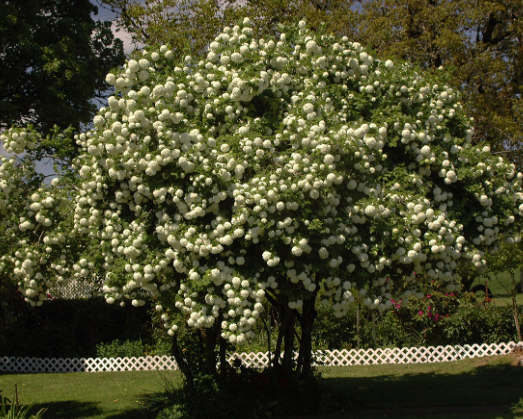Description
Key Facts
Scientific Name: Viburnum opulus ‘Roseum’
Common Name: Roseum Tree Viburnum
Family: Adoxaceae
Height: 8-12 feet at maturity
Spread: 8-12 feet
Leaf Shape: Lobed, maple-like leaves
Bark Color: Gray-brown
Fall Foliage Color: Red to purple
Flower Color: Large, snowball-like clusters of white flowers
Fruit Color: Red berries that persist into winter
Growth Habit: Rounded, dense form
Sunlight: Full sun to partial shade
Soil Preference: Well-drained, loamy soils; adaptable to various soil types
Water Needs: Moderate, prefers consistent moisture
Wildlife Value: Attracts pollinators such as bees and butterflies; berries are enjoyed by birds
Pest and Disease Resistance: Generally resistant to pests and diseases
USDA Hardiness Zone: 3-8
Why You’ll Love It:
The Roseum Tree Viburnum offers a dramatic display of large, white, snowball-like flowers in late spring, followed by vibrant fall foliage and striking red winter berries. Its rounded form and dense growth make it an excellent choice for adding structure and beauty to your garden. With its ability to attract pollinators and provide winter interest, this versatile shrub is a standout addition to any landscape.





